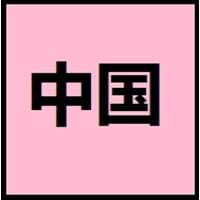Countries
Laos
China, Hong Kong, Macau, Singapore, Taiwan
National Language
Laos, Northeastern Thailand
China, Taiwan
Second Language
Not spoken in any of the countries
Republic of Brazil
Speaking Continents
Asia
Asia
Minority Language
Not spoken in any of the countries
Indonesia, Malaysia
Regulated By
Not Available
Chinese Language Standardization Council, National Commission on Language and Script Work, Promote Mandarin Council
Interesting Facts
- There is no space left between words, only between phrases or sentences in Lao language.
- The Lao alphabets has been reformed many times over the past 50 years.
- Chinese language is tonal, since meaning of a word changes according to its tone.
- In Chinese language, there is no grammatical distinction between singular or plural, no declination of verbs according to tense, mood and aspect.
Similar To
Thai Language
Not Available
Derived From
Pali, Sanskrit and Old Khmer Languages
Not Available
Alphabets in
Lao-Alphabets.jpg#200
Chinese.jpg#200
Scripts
Thai and Lao Braille
Chinese Characters and derivatives
Writing Direction
Left-To-Right, Horizontal
Left-To-Right, Horizontal, Top-To-Bottom
Hello
ສະບາຍດີ (sába̖ai-di̖i)
您好 (Nín hǎo)
Thank You
ຂອບໃຈ (khàwp ja̖i)
谢谢 (Xièxiè)
How Are You?
ສະບາຍດີບ (sába̖ai-di̖i baw?)
你好吗? (Nǐ hǎo ma?)
Good Night
ໃນຕອນກາງຄືນ ທີ່ດີ (naitonkangkhun thidi)
晚安 (Wǎn'ān)
Good Evening
ສະບາຍດີຕອນແລງ (sa bai di ton aelng)
晚上好 (Wǎnshàng hǎo)
Good Afternoon
ສະບາຍດີຕອນສວາຍ (sa bai di ton suaai)
下午好 (Xiàwǔ hǎo)
Good Morning
ສະບາຍດີຕອນເຊົ້າ (sa bai di ton sao)
早安 (Zǎo ān)
Please
ກະລຸນາ (kaluna)
请 (Qǐng)
Sorry
ຂໍອະໄພ (khooaphai)
遗憾 (Yíhàn)
Bye
Sôhk dii der
再见 (Zàijiàn)
I Love You
ຂ້ອຍຮັກເຈົ້າ (khony hak chao)
我爱你 (Wǒ ài nǐ)
Excuse Me
ຂໍໂທດ (kho othd)
劳驾 (Láojià)
Dialect 1
Vientiane Lao
Mandarin
Where They Speak
Laos
China, Malaysia, Singapore, Taiwan
How Many People Speak
Not Available
Dialect 2
Northern Lao
Wu
Where They Speak
Laos
China, United States of America
How Many People Speak
Not Available
Dialect 3
Central Lao
Yue
Where They Speak
Laos
China, Malaysia, Singapore, Vietnam
How Many People Speak
Not Available
Speaking Population
Not Available
Second Language Speakers
Not Available
Native Name
ພາສາລາວ (pháasaa láo)
中文 (zhōngwén)
Alternative Names
Eastern Thai, Lào, Lao Kao, Lao Wiang, Lao-Lum, Lao-Noi, Lao-Tai, Laotian, Laotian Tai, Lum Lao, Phou Lao, Rong Kong, Tai Lao
Not Available
German Name
Laotisch
Chinesisch
Pronunciation
pʰáːsǎː láːw
Not Available
Ethnicity
Not Available
Han
Language Family
Tai-Kadai Family
Sino-Tibetan Family
Subgroup
Tai
Not Available
Branch
Not Available
Not Available
Early Forms
No Early forms
No early forms
Standard Forms
Lao
Standard Chinese
Language Position
Not Available
Signed Forms
Not Available
Wenfa Shouyu 文法手語 ("Grammatical Sign Language", Signed Mandarin (Taiwan))
Scope
Individual
Individual
ISO 639 6
Not Available
Not Available
Glottocode
laoo1244
sini1245
Linguasphere
No data available
79-AAA
Language Type
Living
Living
Language Linguistic Typology
Subject-Verb-Object
Subject-Verb-Object
Language Morphological Typology
Isolating
Analytic, Isolating
Lao and Chinese Greetings
People around the world use different languages to interact with each other. Even if we cannot communicate fluently in any language, it will always be beneficial to know about some of the common greetings or phrases from that language. This is where Lao and Chinese greetings helps you to understand basic phrases in Lao and Chinese language. Lao word for "Hello" is ສະບາຍດີ (sába̖ai-di̖i) or Chinese word for "Thank You" is 谢谢 (Xièxiè). Find more of such common Lao Greetings and Chinese Greetings. These greetings will help you to be more confident when conversing with natives that speak these languages.
Lao vs Chinese Difficulty
The Lao vs Chinese difficulty level basically depends on the number of Lao Alphabets and Chinese Alphabets. Also the number of vowels and consonants in the language plays an important role in deciding the difficulty level of that language. The important points to be considered when we compare Lao and Chinese are the origin, speaking countries, language family, different greetings, speaking population of these languages. Want to know in Lao and Chinese, which language is harder to learn? Time required to learn Lao is 44 weeks while to learn Chinese time required is 88 weeks.





